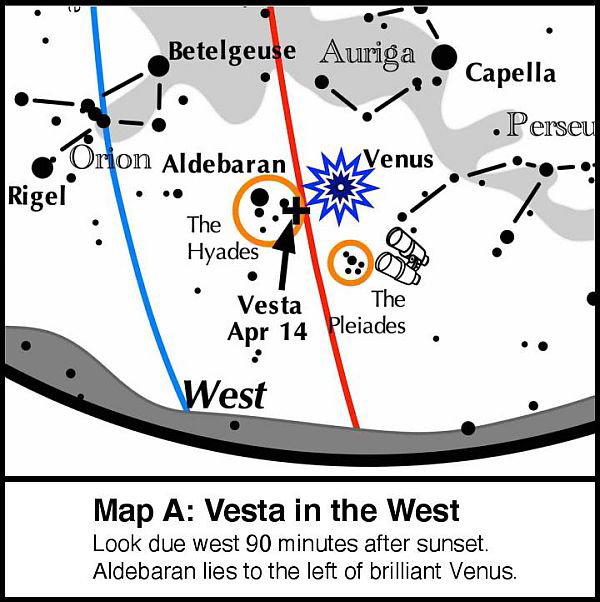In the Footsteps of the Celestial Police (Observing Challenge)
 Frances Azaren
Frances AzarenDuring Global Astronomy Month (GAM), AWB shares a series of observing challenges, developed by John Goss and The Astronomical League for astronomy novices to seasoned pro's. Some of these challenges can be completed in a night while others encourage participation for the full month.

Share your photos from this challenge with us and the world on Facebook, or Tweet using #GAM2020 hashtag and follow (@awb_org).
A Binocular Activity
Eighteenth century astronomers felt there was something wrong with our solar system. They suspected that an unknown planet existed, moving between the orbits of Mars and Jupiter at 2.8 Astronomical Units from the sun. A curious mathematical relationship, eventually called the Bode–Titus Law (BT), had been formulated which seemed to satisfactorily describe the relative spacing of the planetary orbits. A planet was predicted orbiting 2.8 AU from the sun, but nothing was seen.
Planetary Spacing Table
| Planet | B–T Actual value (AU) |
Actual value (AU) |
| Mercury | 0.40 | 0.39 |
| Venus | 0.70 | 0.72 |
| Earth | 1.00 | 1.00 |
| Mars | 1.60 | 1.52 |
| ? | 2.80 | ---- |
| Jupiter | 5.20 | 5.20 |
| Saturn | 10.0 | 9.54 |
| Uranus | 19.60 | 19.19 |
Neptune was not known at the time
European astronomers felt strongly enough about the reality of this unknown planet that they formed a team, nicknamed the “Celestial Police,” to search for it. However, a new body was spotted shortly before they could begin their organized search. On the night of January 1, 1801, team member Guiseppe Piazzi spied a starlike object that had moved slightly in the heavens between the Hyades and Pleiades star clusters. It was soon realized that it was a small body located near the same distance from the sun as was the “missing” planet predicted by the Bode-Titus law. It was eventually called Ceres.
Three other small bodies were discovered over the next few years, all lying about the same distance from the sun as Ceres. They were soon named Pallas, Juno, and Vesta. Over the years, many thousands of these small planetoids were found. They became known as asteroids.
Within the past twenty years, Ceres has been reclassified as a “dwarf planet.” The rest, including Pallas, Juno, and Vesta, are still referred to as asteroids.
Binocular Program: Tracking the asteroid 4 Vesta in its orbital path
How to find Vesta (4 Vesta will appear star like, even through a telescope. It will not be bright, but binoculars should reveal it.)
- Locate the bright star Aldebaran in the western sky 90 minutes after sunset. It will be just south of brilliant Venus. Aldebaran happens to lie in front of a large open cluster of stars, the Hyades. See Map A.
- Aim a pair of binoculars at Aldebaran, then place it on the southern side of the field. The moderately bright star Epsilon will appear near the center of the field. To confirm Epsilon’s identification, three slightly dimmer stars will lie at the field’s western edge.
- About 1/3 of a field directly north of Epsilon are two dim stars. Familiarize yourself with this star field. See Map B.
- On April 13, Vesta will sit very closely to a dim star, about half way between Epsilon and the two dim stars just mentioned.
- Follow the asteroid as it moves from night to night.
Notes:
- 4 Vesta is 325 miles (525 km) in diameter (15% that of our moon).
- At the beginning of April, it lies 285 million miles (460 million km) from Earth; in the middle of the month, it is 298 million miles (481 million km); and at the end of the month, it moves farther away to 309 million miles (499 million km).








